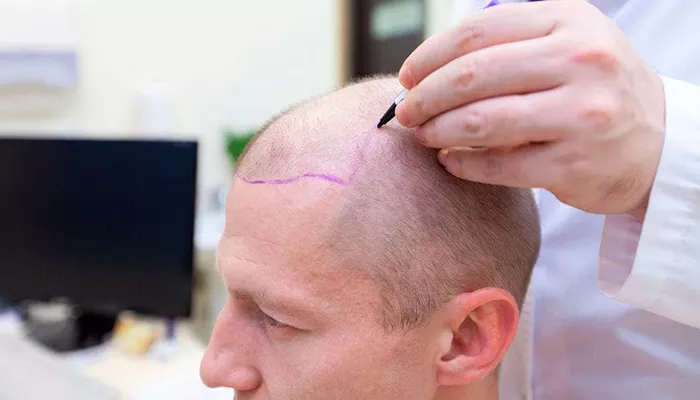Hair transplant surgery has become a popular solution for individuals experiencing hair loss or thinning. This procedure involves relocating hair follicles from a donor site to the balding areas of the scalp. One common question among patients is whether transplanted hair will grow immediately after the surgery. In this comprehensive article, we will explore the process of hair transplantation, the growth timeline, and factors that influence the success of the procedure.
Understanding Hair Transplantation
Hair transplant surgery involves two primary techniques: Follicular Unit Extraction (FUE) and Follicular Unit Transplantation (FUT). Both methods aim to restore hair in areas where natural hair growth has ceased.
Follicular Unit Extraction (FUE):
This technique involves extracting individual hair follicles from the donor area using a specialized punch tool. These follicles are then implanted into tiny incisions in the recipient area.
Follicular Unit Transplantation (FUT):
Also known as strip harvesting, this method involves removing a strip of skin with hair follicles from the donor area. The follicles are then dissected from the strip and implanted into the recipient area.
Both techniques aim to achieve natural-looking results and have their respective advantages and disadvantages.
Immediate Post-Operative Period
Immediately following a hair transplant procedure, patients can expect several changes and sensations:
Swelling and Redness:
It is normal to experience some swelling and redness in the donor and recipient areas. This usually subsides within a few days.
Scabbing:
Small scabs may form around the transplanted follicles. These are a natural part of the healing process and should not be disturbed.
Discomfort:
Mild discomfort or itching is common in the initial days after the procedure.
During this early stage, it is crucial to follow the post-operative care instructions provided by your surgeon to promote healing and avoid complications.
Hair Growth Timeline After Transplant
Transplanted hair does not grow immediately. Understanding the typical growth timeline helps manage expectations and plan for the future. Here is a general overview of what to expect:
Weeks 1-2: Shedding Phase
Initial Shedding: Around 1 to 2 weeks after the surgery, many patients experience a phenomenon known as “shock loss.” This is where the newly transplanted hair follicles enter a resting phase and may shed. This shedding is temporary and part of the natural growth cycle.
Weeks 3-4: Healing Phase
Healing Process: The recipient and donor sites continue to heal. The scabs begin to fall off, and the transplanted hair follicles start establishing themselves in their new locations.
Months 2-3: Early Growth Phase
Dormant Period: During this period, there may not be significant visible growth. The hair follicles are adjusting to their new environment and preparing for the next growth phase.
Months 4-6: Early Hair Growth
New Growth: Patients may start to see the early signs of hair growth. The new hair will initially be fine and soft but gradually thicken over time.
Months 7-12: Continued Growth
Significant Growth: By this time, patients typically see more substantial hair growth. The hair may begin to blend more naturally with existing hair.
Months 12-18: Mature Results
Full Results: Most patients see their final results around 12 to 18 months post-surgery. The hair should be fully grown and have a natural appearance.
SEE ALSO: Can You Use Hair Fibers After Hair Transplant?
Factors Influencing Hair Growth
Several factors can affect the success of hair transplant surgery and the growth of transplanted hair:
Surgeon’s Skill: The expertise of the surgeon plays a significant role in the outcome of the procedure. Skilled surgeons use advanced techniques to ensure optimal results.
Donor Hair Quality: The health and quality of the donor hair are critical. Strong, healthy hair follicles yield better results.
Post-Operative Care: Following the post-operative instructions is essential. This includes proper cleaning, avoiding trauma to the scalp, and adhering to medication guidelines.
Individual Healing Rate: Each person heals at a different rate. Genetic factors and overall health can influence the speed and quality of hair growth.
Patient’s Overall Health: Maintaining good overall health and a balanced diet can support hair growth and overall well-being.
Common Misconceptions
There are several misconceptions about hair transplant procedures and the growth of transplanted hair:
Misconception 1:
Transplanted Hair Grows Immediately: As discussed, transplanted hair does not grow immediately. It follows a natural growth cycle with periods of dormancy and shedding.
Misconception 2:
All Transplanted Hair Will Grow: Not all transplanted hair follicles may grow successfully. A small percentage may fail to thrive, but most patients achieve satisfactory results.
Misconception 3:
Transplants Are a Cure-All: Hair transplants can significantly improve hair density and appearance, but they do not stop ongoing hair loss. Ongoing treatment or medication may be necessary to address other hair loss issues.
Conclusion
In summary, transplanted hair does not grow immediately after surgery. Patients should expect a gradual process with several stages, including shedding, healing, and eventual growth. Understanding the timeline and factors influencing growth can help manage expectations and ensure the best possible outcome. If you have any concerns or questions about your hair transplant procedure, consult with your surgeon for personalized advice and guidance.
By being well-informed and following your post-operative care plan, you can maximize the success of your hair transplant and achieve a fuller, more natural-looking head of hair.


